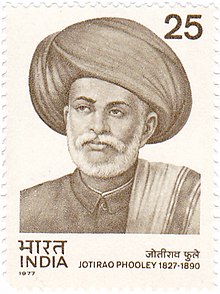This is an old revision of this page, as edited by 2409:4050:e9a:931c::17ca:130b (talk) at 06:00, 22 July 2022 (No source of Malis being a Kshatriya caste). The present address (URL) is a permanent link to this revision, which may differ significantly from the current revision.
Revision as of 06:00, 22 July 2022 by 2409:4050:e9a:931c::17ca:130b (talk) (No source of Malis being a Kshatriya caste)(diff) ← Previous revision | Latest revision (diff) | Newer revision → (diff)| This article needs additional citations for verification. Please help improve this article by adding citations to reliable sources. Unsourced material may be challenged and removed. Find sources: "Mali caste" – news · newspapers · books · scholar · JSTOR (October 2021) (Learn how and when to remove this message) |
Mali people works as gardeners and florists (Phul Mali) due to their occupation of growing flowers. They are found throughout undivided North India now Pakistan, East India in Uttarakhand (A largely military province) as well as other parts of India. Many from Mali community adopted surname Saini abbreviated form of Sainik during 1930s when India was under British colonial rule.
Mali caste of Maharashtra

The present day Mali community of Maharashtra are largely cultivators specializing in horticulture. This community is concentrated in five districts of Western Maharashtra and a district in the Vidarbha region. They traditionally made their living by cultivating fruit, flowers and vegetables.
During 20th century, malis began using irrigation to grow crops such as sugar cane and established farmer owned sugar mills. This establishment of sugar mills in Maharashtra and other regions of India. The community reveres the Varkari saint, Savata Mali. Mali caste of Maharashtra classified under Other Backward Class (OBC) and therefore qualify for quotas set for OBC groups in jobs, education and local government under affirmative action or reservation schemes.
References
- Aggarwal, Partap C (1966). "Problems of Cultural Integration A Muslim Sub-Caste of North India". Economic and Political Weekly. 1 (4): 159–161. JSTOR 4356925.
...the Malis (ie gardners who call themselves Saini now)..
- "At the time of 1941 Census most of them got registered themselves as Saini (Sainik Kshatriya) Malis." pp 7, Census of India, 1961, Volume 14, Issue 5 , Office of the Registrar General, India.
- Gail Omvedt (18 June 1993). Reinventing Revolution: New Social Movements and the Socialist Tradition in India. M.E. Sharpe. p. 336. ISBN 978-0-7656-3176-3.
- Christophe Jaffrelot (Editor); Sanjay Kumar (Editor); Rajendra Vora (Author) (4 May 2012). Rise of the Plebeians?: The Changing Face of the Indian Legislative Assemblies. Routledge. p. 217. ISBN 978-1-136-51662-7.
{{cite book}}:|author1=has generic name (help) - Dr. S. L. PATIL. EXPORT OF IMPORTANT FRUIT CROPS OF MAHARASHTRA Volume-I. Lulu.com. p. 5. ISBN 978-1-365-92369-2.
- Govind Sadashiv Ghurye (1969). Caste and Race in India. Popular Prakashan. p. 38. ISBN 978-81-7154-205-5.
- Maxine Berntsen (1 January 1988). The Experience of Hinduism: Essays on Religion in Maharashtra. SUNY Press. p. 343. ISBN 978-0-88706-662-7.
- Lalwani, Mala (2008). "Sugar Co-operatives in Maharashtra: A Political Economy Perspective" (PDF). The Journal of Development Studies. 44 (10): 1474–1505. doi:10.1080/00220380802265108. S2CID 154425894. Archived from the original (PDF) on 17 January 2014.
- Attwood, D.W., 2010. How I Learned To Do Incorrect Research. Economic and Political Weekly, pp.37-44.
- Donald W. Attwood; D W Attwood (16 September 2019). "The Bombay Deccan: Cane & Gul production". Raising Cane: The Political Economy Of Sugar In Western India. Taylor & Francis. ISBN 978-1-00-030891-4.
- Zagade, Y., 2017. "Caste and Consciousness amongst Malis in Post-Mandal Era" (Doctoral dissertation, Tata Institute of Social Sciences Mumbai). Page 67.
- Patil, R B; Mathew, George (Editor); Baviskar, B S (Editor) (2009). Inclusion and Exclusion in Local Governance: Field Studies from Rural India. New Delhi: sage Publications India. p. 40. ISBN 978-81-7829-860-3.
{{cite book}}:|first2=has generic name (help)